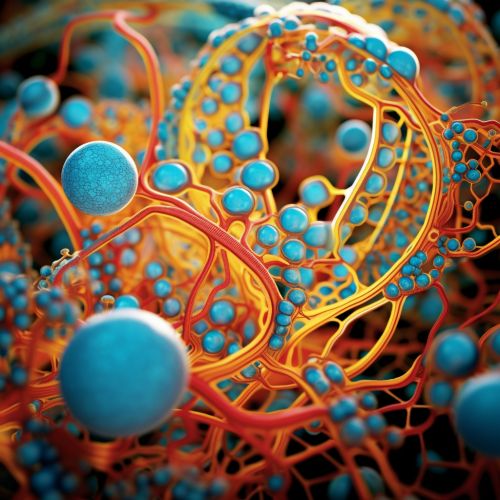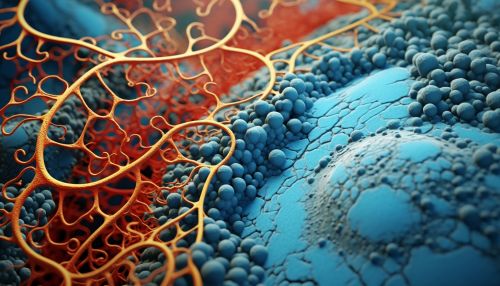Aerobic respiration
Overview
Aerobic respiration is a metabolic process in which cells produce energy in the presence of oxygen. This process involves three stages: Glycolysis, the Krebs cycle, and the Electron transport chain. Through these stages, cells convert glucose and oxygen into carbon dioxide, water, and energy in the form of adenosine triphosphate (ATP).


Glycolysis
Glycolysis is the first stage of aerobic respiration and occurs in the cytoplasm of the cell. It is a ten-step process where glucose, a six-carbon sugar, is split into two three-carbon molecules of pyruvate. During this process, two molecules of ATP are used, and four molecules of ATP are produced, resulting in a net gain of two ATP molecules. Additionally, two molecules of nicotinamide adenine dinucleotide (NAD+) are reduced to NADH.
Krebs Cycle
The Krebs cycle, also known as the citric acid cycle or tricarboxylic acid cycle, is the second stage of aerobic respiration and occurs in the mitochondrial matrix. Before entering the Krebs cycle, each pyruvate molecule from glycolysis is decarboxylated by the enzyme pyruvate dehydrogenase, producing acetyl-CoA, carbon dioxide, and NADH. The acetyl-CoA then enters the Krebs cycle.
In the Krebs cycle, each acetyl-CoA is oxidized to two molecules of carbon dioxide. In the process, three NAD+ molecules are reduced to NADH, one flavin adenine dinucleotide (FAD) molecule is reduced to FADH2, and one molecule of ATP is produced. Since two molecules of acetyl-CoA are produced for each glucose molecule, the Krebs cycle turns twice for each glucose molecule, producing two ATP, six NADH, and two FADH2.
Electron Transport Chain
The electron transport chain (ETC) is the final stage of aerobic respiration and occurs in the inner mitochondrial membrane. The ETC comprises four protein complexes (I, II, III, and IV) and two electron carriers (coenzyme Q and cytochrome c).
NADH and FADH2, produced in the previous stages, donate their electrons to the ETC. These electrons move from one complex to another, driving the active transport of protons (H+) across the inner mitochondrial membrane. This creates a proton gradient, which powers ATP synthesis in a process known as oxidative phosphorylation. Oxygen acts as the final electron acceptor in the ETC, combining with electrons and protons to form water.
ATP Yield
The total ATP yield from one glucose molecule in aerobic respiration varies depending on the efficiency of NADH and FADH2 transport and the proton-to-ATP ratio of the ATP synthase. Theoretically, the maximum ATP yield is 38 molecules: 2 from glycolysis, 2 from the Krebs cycle, and 34 from the ETC. However, in eukaryotes, the actual ATP yield is often closer to 30-32 ATP molecules due to losses in the process of transporting NADH and FADH2 across the mitochondrial membrane.
Significance of Aerobic Respiration
Aerobic respiration is essential for energy production in most eukaryotic organisms. The ATP produced in this process powers various cellular functions, including muscle contraction, nerve impulse propagation, and biosynthesis. Moreover, the process of aerobic respiration is tightly regulated, and its dysregulation is associated with various diseases, including cancer and neurodegenerative disorders.
